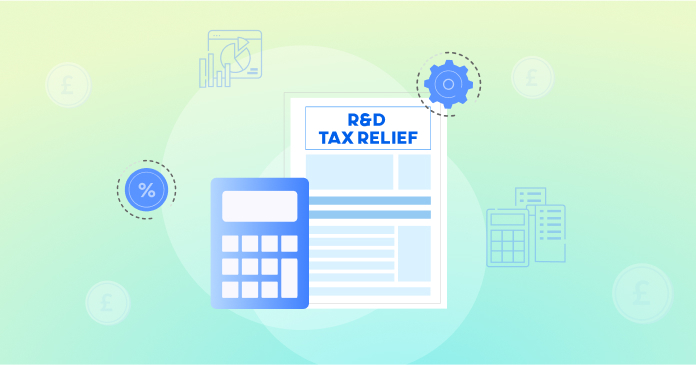Research and Development (R&D) tax relief is a valuable government incentive designed to support UK businesses investing in innovation. If your company has been working on developing new products, processes, or services—or even improving existing ones—you may be eligible for tax credits or reductions.
This guide answers questions like;
- What is an R&D tax relief?
- What qualifies for R&D Tax Relief?
- Do HMRC Check R&D Claims?
- Can You Write Off R&D Expenses on Taxes?
- How can Debitam help with your R&D Tax Claim?
What Exactly is R&D Tax Relief?
R&D tax relief is a financial incentive from the government that rewards organisations for innovation in science and technology. It allows businesses to either:
- Reduce their Corporation Tax bill if they are profitable. For more tips to reduce your tax bill, click here
- Claim a cash credit if they are loss-making. To see 8 tax claims you probably didn't know existed, read here.
The relief is designed to encourage investment in R&D, boosting productivity, competitiveness, and innovation across industries in the UK.
Can You Write Off R&D Expenses on Taxes?
Yes, UK businesses can write off expenses related to qualifying R&D projects. The exact benefit depends on whether your company is profit-making or loss-making, but in both cases, this relief translates into significant savings.
- Profit-making companies can deduct an additional 86% of qualifying R&D costs (on top of the normal 100%) from their taxable profits.
- Loss-making companies can claim tax credits based on their qualifying R&D expenditure, providing a much-needed cash flow boost.
Tax Relief Rates for R&D Explained
The rate of R&D tax relief depends on the size of your business and its financial situation.
- For Small and Medium-Sized Enterprises (SMEs):
- Profit-making SMEs can benefit from a deduction equalling up to 186% of qualifying costs.
- Loss-making SMEs may reclaim up to 10% or, in some cases, 27% (if they meet the "R&D-intensive" condition for high R&D spending relative to total expenditure).
- For large companies or SMEs under the RDEC (Research and Development Expenditure Credit) scheme:
- The net cash benefit for profit-making entities is typically 15% of R&D spending, while loss-makers can claim around 16.2% back.
These rates change depending on the accounting period, so be sure to check the latest government updates.
What Expenditure Qualifies for R&D Tax Credits?
To benefit from R&D tax relief, your business must demonstrate that it has undertaken activities aimed at resolving technological or scientific uncertainties. Qualifying costs include:
- Staff costs such as salaries, employer’s National Insurance contributions, and associated pensions.
- Consumables like materials, light, and heat directly attributable to your R&D activity.
- Software and cloud computing costs used to enable or perform R&D tasks.
- Subcontractor and freelancer fees for specific R&D projects.
- Clinical trial volunteer payments, if applicable in scenarios like pharmaceutical research.
For example:
- A tech start-up that develops innovative software improving user performance can claim costs associated with developer salaries, licences, and cloud storage.
- A manufacturing SME working on a new energy-efficient product could include wages spent on design engineers, materials from prototypes, and testing costs.
However, expenditures related to routine product updates or aesthetic improvements typically do not qualify.
How Does R&D Tax Relief Work?
The R&D tax relief process involves:
- Identifying Eligible Projects – Determine whether any of your company’s activities qualify as projects trying to address "scientific or technological uncertainty." HMRC defines R&D broadly but specifies that success isn’t mandatory—they reward the attempt, not just the outcome.
- Calculating Your Qualifying Costs – Assess all relevant expenditures, including direct staff costs, software licences, and related overheads.
- Filing Your Claim – Submit your figures as part of your Company Tax Return using HMRC’s CT600 form and supplement it with a mandatory "Additional Information Form" (from August 2023 onwards). This should clearly outline qualifying activities and costs for transparency. To comply with the form fully, you'd want to hire an accountant so that you can avoid underclaims or time-wasting.
Working with experts or specialised tax consultants can help you optimise your claim and avoid pitfalls.
Do HMRC Check R&D Claims?
Yes, and rightly so. HMRC rigorously reviews claims to ensure compliance, especially given some high-profile cases of abuse in preceding years. From August 2023 onwards, HMRC requires additional documentation, including:
- A breakdown of qualifying costs
- A detailed explanation of the R&D undertaken
- Sign-off from a senior officer within your company
These steps can feel like an administrative burden, but they’re crucial to ensure a claim’s validity and reduce your risk of enquiry.
If you're making your first claim, you can consider applying for Advance Assurance, a voluntary scheme guaranteeing HMRC acceptance (if properly structured).
An accountant can be immensely of help in this. There are a significant number of HMRC Enquiries on companies that wrongly made claims in the past.
How Do You Account for an R&D Tax Credit?
Once approved, an R&D tax credit appears on your financial statements as either:
- A reduction in your tax liability on the Corporation Tax line, or
- A cash credit increasing cash flow in loss-making scenarios.
Ensure your accounting systems and bookkeepers are ready to accurately record these transactions—having strong, transparent systems will save time and stress come audit season.
Real-World Examples of R&D Success
To better understand the impact of R&D tax relief, here are examples drawn from diverse industries:
- Manufacturing SME – Developed a more efficient production process, reducing energy usage and costs, resulting in a substantial R&D tax claim.
- Tech Start-up – Created AI-powered software tools, qualifying for R&D tax credits on development costs, including developer staffing and cloud computing fees.
- Engineering Firm – Invested in new materials reducing construction waste, leading to a successful R&D tax claim.
- Food & Beverage Company – Revolutionised packaging methods to extend shelf life, earning R&D tax credits for material testing and prototyping costs.
- Pharmaceutical SME – Ongoing drug development across two years secured essential financial support through UK-based R&D incentives.
These examples illustrate how R&D tax relief can unlock cash flow, enabling businesses to innovate and grow while reducing operational risks.
Final Thoughts – Can You Claim R&D Tax Relief?
Don’t miss out on the valuable savings and funding opportunities that R&D tax credits can provide. At Debitam, our team of experts specializes in simplifying the R&D tax claims process for startups and SMEs, ensuring you maximize your claim while staying compliant. With our tailored advice and seamless filing support, we’ll help you unlock the full potential of your innovation projects. Get in touch with Debitam today to make your R&D tax claim hassle-free and get the rewards your business deserves.













